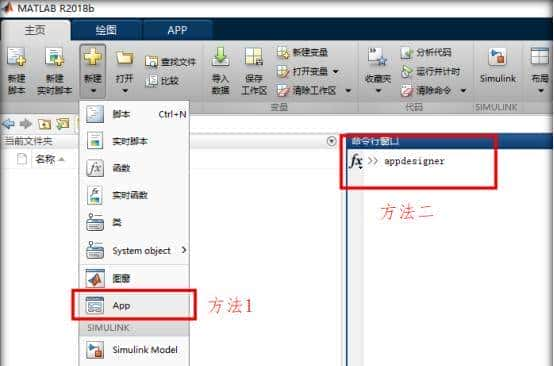Java 并发编程中的线程泄漏:高概率场景与彻底修复策略
大家好,今天我们来深入探讨一个在 Java 并发编程中非常隐蔽但又影响深远的陷阱:线程泄漏。 线程泄漏不像内存泄漏那样容易被监控工具发现,但它会逐渐消耗系统资源,最终导致性能下降甚至系统崩溃。 线程泄漏通常发生在多线程应用程序中,当线程创建后无法被正确回收或关闭时就会发生。 这次讲座我们将深入研究线程泄漏的高概率场景,并提供彻底的修复策略。
线程泄漏的根本原因
理解线程泄漏的根本原因,才能有效预防和修复。 简而言之,线程泄漏发生的原因在于线程创建后,它的生命周期没有被有效地管理,导致线程无法正常终止或回收。 具体来说,以下几个方面是导致线程泄漏的罪魁祸首:
线程未正常终止: 线程执行完成后,没有正确地释放占用的资源,或者线程内部的逻辑错误导致线程一直处于运行状态。线程池配置不当: 线程池配置不合理,例如核心线程数过大,或者任务队列过长,导致线程池中的线程一直处于空闲状态,无法被回收。线程上下文持有对象引用: 线程的上下文持有对其他对象的引用,而这些对象又无法被垃圾回收器回收,导致线程也无法被回收。未正确关闭资源: 线程在使用完资源(例如数据库连接、文件句柄等)后,没有及时关闭这些资源,导致资源被占用,线程也无法正常退出。
高概率线程泄漏场景分析
现在我们来看几个在 Java 并发编程中容易发生线程泄漏的高概率场景,并给出具体的示例代码。
1. 长时间运行的任务:
如果一个线程执行的任务需要很长时间才能完成,并且在任务执行过程中没有设置超时机制或中断机制,那么这个线程就很容易发生泄漏。
public class LongRunningTask implements Runnable {
@Override
public void run() {
while (true) {
// 模拟长时间运行的任务
try {
Thread.sleep(1000);
System.out.println("Task running...");
} catch (InterruptedException e) {
// 如果没有处理中断,线程会继续运行
System.out.println("Task interrupted, but continues to run!");
//Thread.currentThread().interrupt(); //重新设置中断标志,给上层处理
}
}
}
public static void main(String[] args) throws InterruptedException {
Thread taskThread = new Thread(new LongRunningTask());
taskThread.start();
Thread.sleep(5000); // 主线程休眠5秒后中断任务线程
taskThread.interrupt();
Thread.sleep(5000); // 主线程再次休眠5秒,观察任务线程是否停止
System.out.println("Main thread finished.");
}
}在这个例子中,
LongRunningTask
catch
InterruptedException
catch
Thread.currentThread().interrupt();
修复策略:
设置超时机制: 为任务设置一个最大执行时间,如果超过这个时间任务还没有完成,就强制中断线程。正确处理中断信号: 在
catch
InterruptedException
volatile
volatile
volatile
2. 线程池配置不当:
线程池的配置直接影响线程的生命周期。 如果核心线程数设置过大,或者任务队列过长,会导致线程池中的线程一直处于空闲状态,无法被回收。
import java.util.concurrent.ExecutorService;
import java.util.concurrent.Executors;
public class ThreadPoolLeak {
public static void main(String[] args) throws InterruptedException {
// 创建一个固定大小的线程池,核心线程数和最大线程数相同
ExecutorService executor = Executors.newFixedThreadPool(100); // 核心线程数过大
// 提交一些任务到线程池
for (int i = 0; i < 10; i++) {
final int taskNumber = i;
executor.submit(() -> {
try {
System.out.println("Task " + taskNumber + " is running in thread: " + Thread.currentThread().getName());
Thread.sleep(1000); // 模拟任务执行时间
} catch (InterruptedException e) {
e.printStackTrace();
}
});
}
// 关闭线程池
// executor.shutdown(); // 正确关闭线程池
// executor.awaitTermination(60, TimeUnit.SECONDS); // 等待线程池中的任务完成
System.out.println("Main thread finished.");
}
}在这个例子中,我们创建了一个固定大小的线程池,核心线程数为100。 如果提交的任务数量远小于核心线程数,那么线程池中的大部分线程会一直处于空闲状态,无法被回收,从而导致泄漏。 此外,如果忘记调用
shutdown()
修复策略:
合理配置线程池参数: 根据实际需求,合理配置核心线程数、最大线程数和任务队列的大小。使用
shutdown()
shutdown()
try-finally
// 正确关闭线程池的示例
import java.util.concurrent.ExecutorService;
import java.util.concurrent.Executors;
import java.util.concurrent.TimeUnit;
public class ThreadPoolLeakFixed {
public static void main(String[] args) throws InterruptedException {
ExecutorService executor = Executors.newFixedThreadPool(10);
try {
for (int i = 0; i < 10; i++) {
final int taskNumber = i;
executor.submit(() -> {
try {
System.out.println("Task " + taskNumber + " is running in thread: " + Thread.currentThread().getName());
Thread.sleep(1000);
} catch (InterruptedException e) {
e.printStackTrace();
}
});
}
} finally {
executor.shutdown();
executor.awaitTermination(60, TimeUnit.SECONDS);
System.out.println("Main thread finished.");
}
}
}3. 线程上下文持有对象引用:
如果线程的上下文(例如 ThreadLocal 变量)持有对其他对象的引用,而这些对象又无法被垃圾回收器回收,那么线程也无法被回收。
import java.util.concurrent.atomic.AtomicInteger;
public class ThreadLocalLeak {
private static final ThreadLocal<StringBuilder> stringBuilder = ThreadLocal.withInitial(() -> new StringBuilder());
private static final AtomicInteger counter = new AtomicInteger(0);
public static void main(String[] args) throws InterruptedException {
for (int i = 0; i < 10; i++) {
new Thread(() -> {
int threadId = counter.incrementAndGet();
System.out.println("Thread " + threadId + " started.");
// 使用 ThreadLocal 变量
StringBuilder builder = stringBuilder.get();
builder.append("Thread ").append(threadId).append(": This is some data. ");
System.out.println(builder.toString());
// 没有显式地清理 ThreadLocal 变量
// stringBuilder.remove(); // 正确的做法:显式清理 ThreadLocal 变量
System.out.println("Thread " + threadId + " finished.");
}).start();
Thread.sleep(100); // 模拟线程执行时间
}
}
}在这个例子中,
ThreadLocal
stringBuilder
StringBuilder
remove()
ThreadLocal
StringBuilder
修复策略:
显式清理 ThreadLocal 变量: 在线程结束前,一定要调用
remove()
ThreadLocal
ThreadLocal
// 正确清理 ThreadLocal 变量的示例
import java.util.concurrent.atomic.AtomicInteger;
public class ThreadLocalLeakFixed {
private static final ThreadLocal<StringBuilder> stringBuilder = ThreadLocal.withInitial(() -> new StringBuilder());
private static final AtomicInteger counter = new AtomicInteger(0);
public static void main(String[] args) throws InterruptedException {
for (int i = 0; i < 10; i++) {
new Thread(() -> {
int threadId = counter.incrementAndGet();
System.out.println("Thread " + threadId + " started.");
StringBuilder builder = stringBuilder.get();
builder.append("Thread ").append(threadId).append(": This is some data. ");
System.out.println(builder.toString());
try {
// 一些操作
} finally {
// 确保 ThreadLocal 变量被清理
stringBuilder.remove();
}
System.out.println("Thread " + threadId + " finished.");
}).start();
Thread.sleep(100);
}
}
}4. 未正确关闭资源:
如果线程在使用完资源(例如数据库连接、文件句柄等)后,没有及时关闭这些资源,会导致资源被占用,线程也无法正常退出。
import java.io.FileWriter;
import java.io.IOException;
public class ResourceLeak {
public static void main(String[] args) {
for (int i = 0; i < 10; i++) {
new Thread(() -> {
FileWriter writer = null;
try {
writer = new FileWriter("output.txt", true);
writer.write("This is some data.n");
System.out.println("Data written to file.");
} catch (IOException e) {
e.printStackTrace();
} finally {
// 没有正确关闭 FileWriter
// try {
// if (writer != null) {
// writer.close();
// }
// } catch (IOException e) {
// e.printStackTrace();
// }
}
System.out.println("Thread finished.");
}).start();
}
}
}在这个例子中,
FileWriter
修复策略:
使用 try-with-resources 语句: 使用 try-with-resources 语句可以自动关闭资源,避免资源泄漏。在 finally 块中关闭资源: 如果无法使用 try-with-resources 语句,可以在 finally 块中手动关闭资源。
// 正确关闭资源的示例
import java.io.FileWriter;
import java.io.IOException;
public class ResourceLeakFixed {
public static void main(String[] args) {
for (int i = 0; i < 10; i++) {
new Thread(() -> {
try (FileWriter writer = new FileWriter("output.txt", true)) { // 使用 try-with-resources 语句
writer.write("This is some data.n");
System.out.println("Data written to file.");
} catch (IOException e) {
e.printStackTrace();
}
System.out.println("Thread finished.");
}).start();
}
}
}5. 内部类持有外部类引用:
当内部类(尤其是非静态内部类)在线程中使用时,如果内部类持有外部类的引用,并且线程的生命周期比外部类长,那么外部类就无法被垃圾回收器回收,从而导致泄漏。
public class OuterClass {
private String data = "This is some data.";
public void startThread() {
new Thread(new InnerClass()).start();
}
private class InnerClass implements Runnable {
@Override
public void run() {
// 内部类持有外部类的引用
System.out.println("InnerClass running with data: " + data);
try {
Thread.sleep(5000); // 模拟长时间运行的任务
} catch (InterruptedException e) {
e.printStackTrace();
}
System.out.println("InnerClass finished.");
}
}
public static void main(String[] args) throws InterruptedException {
OuterClass outer = new OuterClass();
outer.startThread();
// 让主线程结束,但内部类线程还在运行
System.out.println("Main thread finished.");
Thread.sleep(1000);
}
}在这个例子中,
InnerClass
OuterClass
InnerClass
OuterClass
OuterClass
修复策略:
使用静态内部类: 将内部类声明为静态内部类,这样内部类就不会持有外部类的引用。避免在内部类中持有外部类的引用: 如果必须使用非静态内部类,尽量避免在内部类中持有外部类的引用。使用 WeakReference: 使用
WeakReference
// 使用静态内部类修复线程泄漏
public class OuterClassFixed {
private String data = "This is some data.";
public void startThread() {
new Thread(new StaticInnerClass(data)).start();
}
private static class StaticInnerClass implements Runnable {
private final String data;
public StaticInnerClass(String data) {
this.data = data;
}
@Override
public void run() {
System.out.println("StaticInnerClass running with data: " + data);
try {
Thread.sleep(5000);
} catch (InterruptedException e) {
e.printStackTrace();
}
System.out.println("StaticInnerClass finished.");
}
}
public static void main(String[] args) throws InterruptedException {
OuterClassFixed outer = new OuterClassFixed();
outer.startThread();
System.out.println("Main thread finished.");
Thread.sleep(1000);
}
}检测线程泄漏
除了预防之外,及时检测线程泄漏也是非常重要的。 以下是一些常用的检测线程泄漏的方法:
使用 JConsole 或 VisualVM: 这些工具可以监控 JVM 中的线程数量和状态,如果发现线程数量不断增加,可能存在线程泄漏。使用线程转储 (Thread Dump): 线程转储可以查看当前 JVM 中所有线程的堆栈信息,通过分析线程的堆栈信息,可以找到泄漏的线程。使用代码分析工具: 一些代码分析工具可以自动检测代码中的线程泄漏问题。监控线程池状态: 定期监控线程池的活跃线程数、队列长度等指标,如果发现异常,可能存在线程泄漏。
彻底修复策略总结
| 场景 | 根本原因 | 修复策略 |
|---|---|---|
| 长时间运行的任务 | 线程未正常终止,没有超时或中断机制 | 设置超时机制,正确处理中断信号,使用 |
| 线程池配置不当 | 核心线程数过大,任务队列过长,忘记关闭线程池 | 合理配置线程池参数,使用 |
| 线程上下文持有对象引用 | |
显式清理 |
| 未正确关闭资源 | 线程使用完资源后未及时关闭 | 使用 try-with-resources 语句,在 finally 块中关闭资源。 |
| 内部类持有外部类引用 | 内部类持有外部类引用,线程生命周期比外部类长 | 使用静态内部类,避免在内部类中持有外部类的引用,使用 |
线程泄漏的预防与调试
预防线程泄漏,需要对并发编程的原理有深刻的理解,并且在编写代码时要格外小心。 调试线程泄漏问题可能非常困难,需要使用各种工具和技术来定位泄漏的线程。 通过这次讲座,希望大家能够更好地理解线程泄漏的原因,并掌握预防和修复线程泄漏的策略。
相关文章













